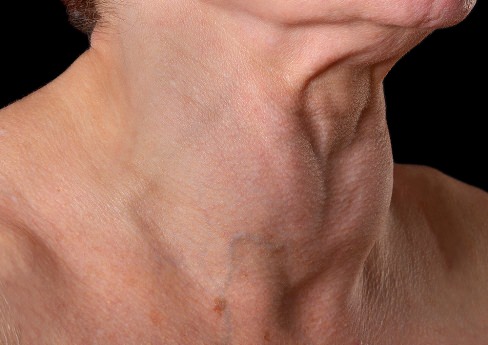Multinodular goitre: Symptoms, causes and consequences
A small lump in the neck is usually the first sign of goiter, a benign condition that however should not be underestimated if alteration of thyroid hormones.
The goiter is the increase of the thyroid gland and when presented with multiple nodules it is called multinodular goitre. It is a benign disease, and in fact in most patients thyroid hormones are normal, although it also may be altered causing what is known as overactive goiter. What are its causes? What are the signs that alert us of the goiter? And, above all, what can be consequences and how to treat it? Let’s look more closely, what is behind this ailment.
Table of Contents
Causes
The most common cause of goiter is lack of iodine in the diet, whose main source is fish and meat. Iodine also found in other foods such as salt or bread. Other causes of goiter may be in the genetic heritage, being a more common ailment in women, especially between 35 and 45 years.
Symptom
The first sign of goiter is usually the appearance of a small lump in the neck. If it increases in size can cause breathing difficulties, coughing and swallowing problems. When behind the goiter there is an alteration of the thyroid hormones and causes hyperthyroidism or hypothyroidism may also pursue symptoms related to these disorders.
For diagnosis the doctor will perform a neck ultrasound to determine the characteristics of goiter. The blood tests allow you to check the thyroid hormones and other factors helps to confirm the diagnosis. If the ultrasound does not reveal a conclusive diagnosis, the doctor may prescribe other tests such as a thyroid scan, CT or MRI.
Consequences and treatment
Treatment depends on the cause and symptoms presented by the patient. When the goiter is small, there is no alteration of the thyroid hormones and the patient presents no inconvenience, it is usually sufficient to monitor its progress every six months. In case of alteration of hormones, there will be treated appropriately (depending on whether it is hypothyroidism or hyperthyroidism) in addition to controls frequently. In some cases, it may be necessary to perform surgery, especially when the goiter causes compression at the level of the neck.
